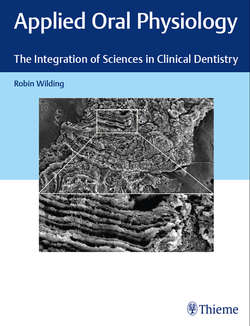Читать книгу Applied Oral Physiology - Robin Wilding - Страница 6
На сайте Литреса книга снята с продажи.
Preface
ОглавлениеLearning is an enjoyable travel companion on the lifelong journey that dentists go on. They select, and add to their collection along the way, an easy and useful balance of dental science, technology, and clinical skill. It is not possible to acquire all this learning and wisdom during the period of formal training at dental school. In spite of this reality, some schools offer the dental science component of this body of skill in full measure and separate it into disciplines. This titration is not evidence-based and is not effective. The problem is simply too much information. The recently qualified dentist discovers an imbalance between the substantial knowledge mastered at dental school and her, or his, clinical skill. The ability to reveal and assess the key elements of a problem, make appropriate decisions with the patient in relation to the options, and summon the technical skills to put plans into effect, does not receive the foundation as promised by the traditional dental curriculum.
A more appropriate measure of dental science knowledge is achieved in schools which use self-directed learning based on clinical cases. In this style of learning, the contribution madeby dental sciences is integrated and on a need-to-know basis. Some dental academics will demur that this style of learning can neither be thorough nor comprehensive. However, they are not preparing students to become clones of themselves; their students are to become clinicians.
Dentists who attend continuing education courses have a good idea of what they need and want to learn. They are surely in a good position to assess the value of course content; as academics, we should be learning from them about the lifelong process of growth as a dentist. If we do listen, we will hear repeatedly that an exhaustive understanding of dental science is not useful in the practice of dentistry. This is not a denial of science, but a preference for applied science, which will be at the core of those who practice evidence-based dentistry.
I hope that this book will serve as an introduction to applied oral physiology and will also enable students or practicing dentists to find what they need to know. More expert-based sources can be found in the suggested reading section. Some information which may be beyond the “need-to-know,” but may be of interest, has been included in appendices. There is a glossary for those unfamiliar with some terms.
This book is a work in progress. I hope that it will evolve by way of suggestions and corrections from readers as well as new insights and developments in dental science.
Robin Wilding, BDS, Dip Pros, M Dent, PhD, MSc
